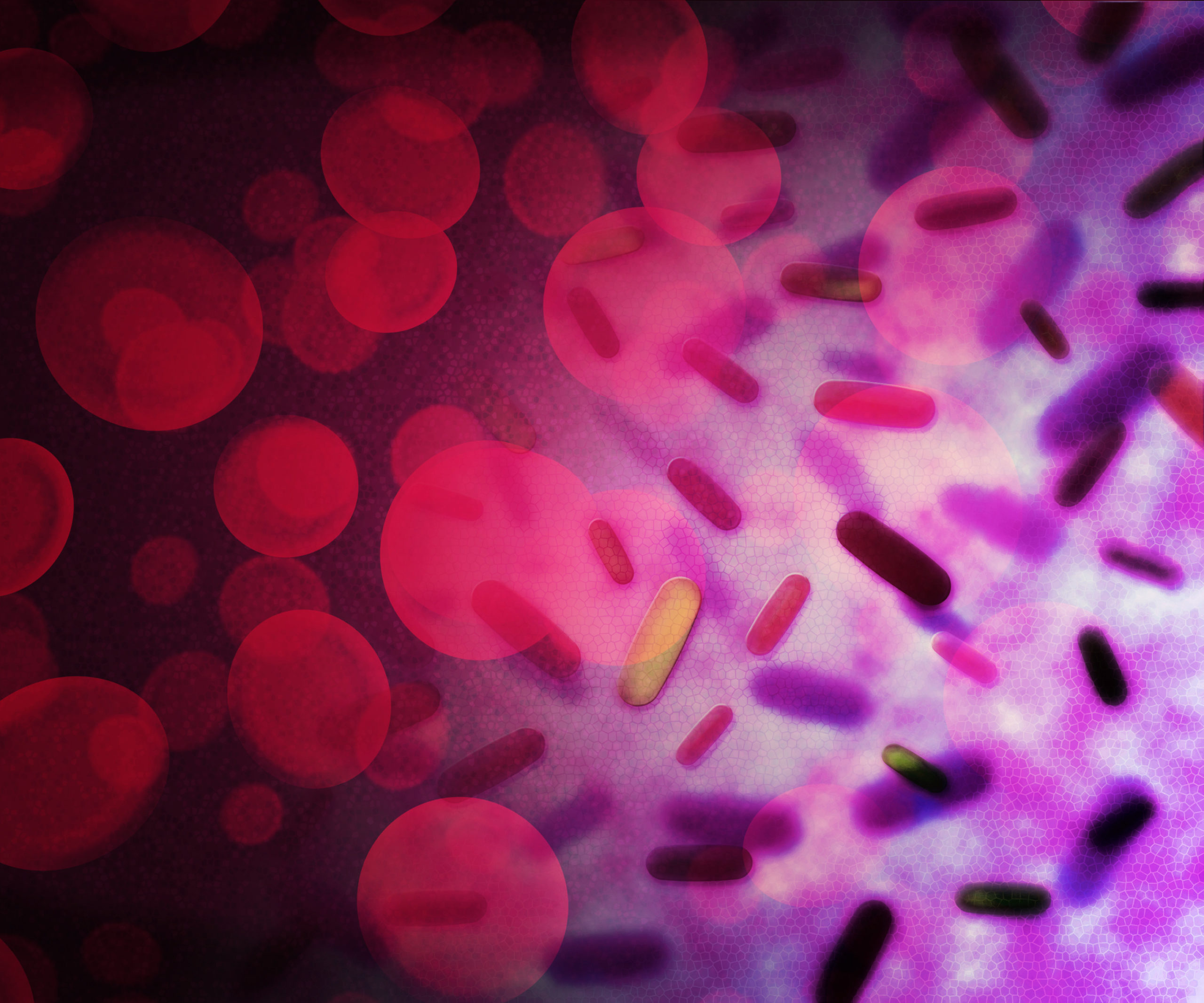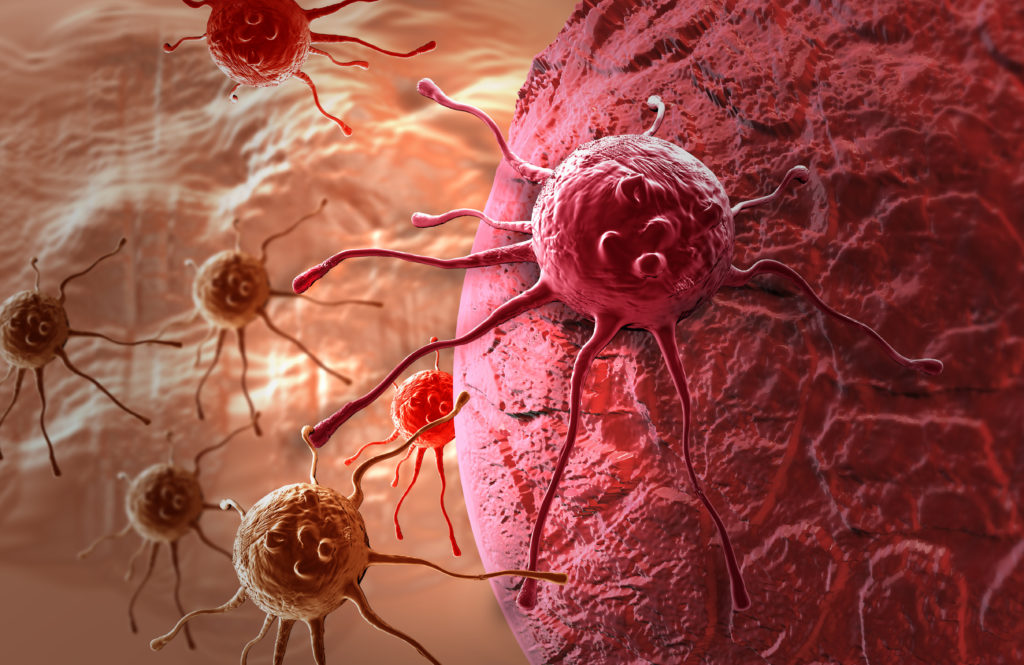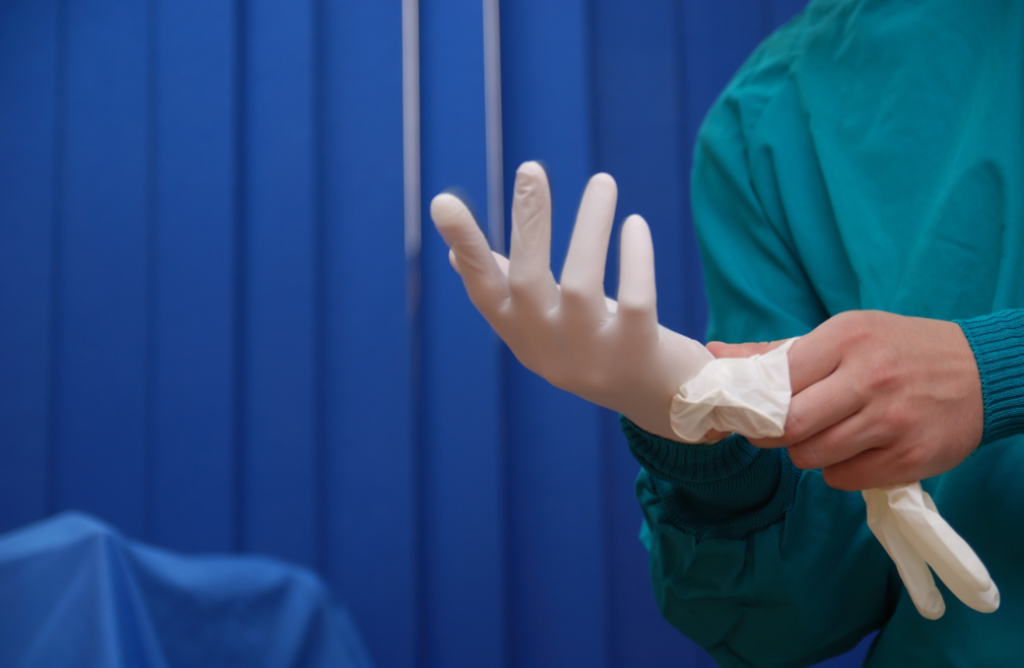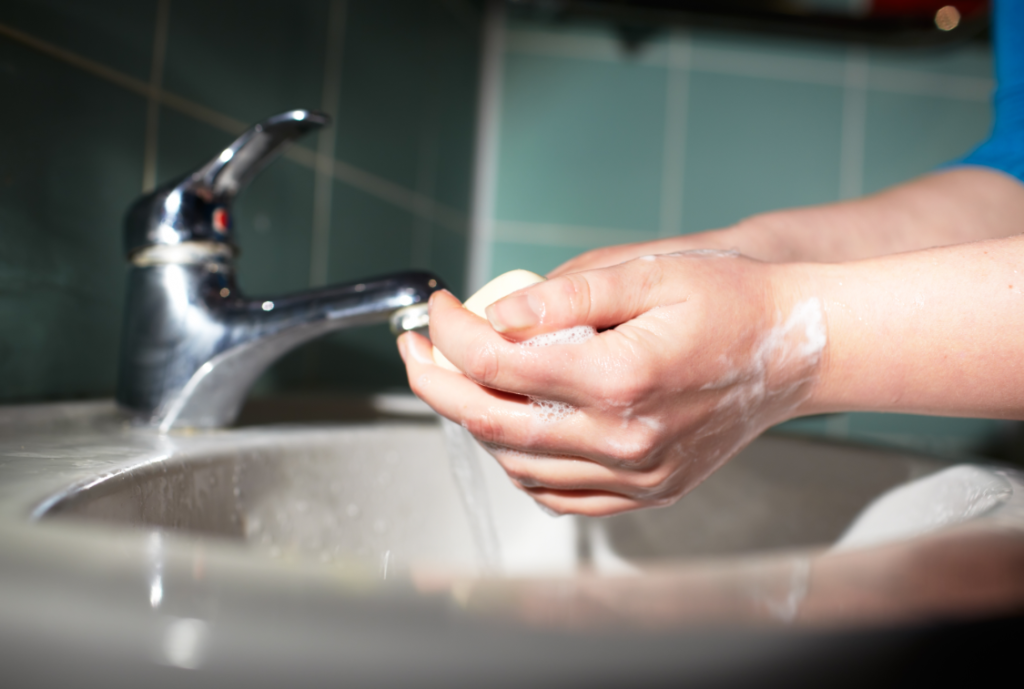Bloodborne pathogens training for those who need to earn their certification. This course is designed for professionals commonly exposed to bloodborne pathogens in the workplace. In this course, you will learn about bloodborne pathogens (BBP), how to prevent exposure to BBP, and what to do when exposed. Each chapter is easy to comprehend and well-informed to give you the necessary training. Once you’ve reviewed the course materials below, you’ll be ready to take the BBP exam, and earn your certificate.
Bloodborne Pathogens Course Chapters:
CHAPTER 1: INTRODUCTION

WHAT IS A BLOODBORNE PATHOGEN (BBP)?
A bloodborne pathogen (BBP) is a disease-causing microorganism in human blood.
WHY YOU SHOULD BE AWARE OF BLOODBORNE PATHOGENS
Bloodborne pathogens can easily contaminate and cause disease in humans. There are various bloodborne
pathogens, including syphilis and malaria.
However, Hepatitis B (HBV), Hepatitis C (HCV), and the Human Immunodeficiency Virus (HIV) are notable threats because the effects of these diseases on your health are long-term. For instance, hepatitis B and hepatitis C can lead to cirrhosis (liver scarring), while HIV can cause damage to your immune system.
STANDARD PRECAUTIONS
Standard precautions include Personal Protective Equipment (PPE) and Body Substance Isolation (BSI). These precautions are designed to prevent transmission when you come into contact with a BBP.
CHAPTER 2: HOW BLOODBORNE PATHOGENS ARE TRANSMITTED

Bloodborne pathogens are transmitted through contact with body fluids like blood, saliva, mucus, breastmilk, semen, cerebrospinal fluid, etc., from an infected person. The infected person who transmits the BBP is known as the source individual.
It is important to note that bloodborne pathogens are NOT transmitted through casual contact like sneezing or coughing.
These are the common ways in which BBP can be transmitted:
- Random punctures or cuts from sharp objects like broken glass, scalpels, needles, and other contaminated sharps.
- Sexual contact
- Direct contact with the infected body fluids or broken skin
- Transfer from mothers to babies before birth or during delivery.
Remember, bloodborne pathogens transmitted from one individual to the other can cause diseases like HIV/AIDS, Syphilis, Hepatitis B, and Hepatitis C.
CHAIN OF INFECTION
Infections occur after going through several events. This is known as the Chain of Infection. A bloodborne pathogen goes through six links in the chain:
- The infectious agent – In this case, it refers to the bloodborne pathogen that causes diseases.
- Reservoir – this refers to the source of infection where the microorganism lives and thrives—for example, people, animals, and medical equipment.
- Portal of exit – this explains how the microorganism leaves the source (through broken skin, saliva, blood splatter, etc.)
- Mode of transmission – It represents how the microorganism is passed on from one person to another. It could happen through contact (direct or indirect), inhalation, or ingestion.
- Portal of entry – refers to how the microorganism enters a new host. This could happen through contact with infected body fluids or contaminated sharps.
- Susceptible host – this refers to any individual who is vulnerable to infections. An example of a susceptible host is an individual with a weak immune system.
The chain of infection can be broken by adhering to general precautions or safety measures. This will break one or more links and prevent transmission. Wash your hands frequently, sterilize medical equipment and instruments, and stay up to date on your vaccines.
CHAPTER 3: BBP PROTECTION

STANDARD PRECAUTIONS
Standard or universal precautions are common procedures used to avoid contact with blood and body fluids. Whether you are conscious of the presence of a blood-borne pathogen or not, precautions should be taken for your safety. The primary components of standard precautions are PPE and BSI.
PERSONAL PROTECTIVE EQUIPMENT (PPE)
PPE is equipment worn to reduce exposure to contagious or hazardous materials. Some examples of
PPE includes face masks, gloves, and disposable gowns. PPE offers full protection against all risks, no matter how small.
BODY SUBSTANCE ISOLATION (BSI)
BSI is an infection control practice of isolating yourself from bodily fluids like blood, urine, tears, and mucus. BSI is essential in environments where individuals are exposed to body substances.
CHAPTER 4: PROTECTIVE GEAR

PROTECTIVE GEAR
Several types of protective gear can be used to protect you from a bloodborne pathogen in your workplace. Some examples of PPE include disposable gloves, face masks, face shields, and gowns.
DISPOSABLE GLOVES
These are commonly used for protection from BBP, and they come in various types.
When working in a laboratory, disposable medical gloves are required.
Utility gloves are more practical for disinfecting contaminated areas or equipment. Sometimes for additional safety, while working, you need to double up by wearing more than one type of glove.
REMOVING THE GLOVES
While working, your gloves can get damaged, and you must know how to change them safely mid-task. Unlike utility gloves, disposable gloves like latex gloves cannot be disinfected and reused. Below is a step-by-step guide on how to remove them properly.
- Begin the removal process by pulling the fingertips downward till the glove comes off.
- Hold the glove you just removed in the palm of your gloved hand.
- With your gloved hand pointing downward, peel off the second glove by carefully inserting two fingers of your ungloved hand into the glove away from your wrist.
- Roll the second glove inside out while keeping it away from your body.
- With the first glove inside the second, dispose of the gloves safely.
- Make sure you wash your hands after disposal.
FACE MASKS AND FACE SHIELDS
Face masks are an essential part of personal protective equipment. They protect your nose and mouth from bloodborne pathogens. Like latex gloves, face masks cannot be reused.
In comparison, face shields protect your entire face from substances or droplets that carry bloodborne pathogens. However, face shields, if decontaminated properly, can be reused.
GOWNS
Gowns cover your full body and shield you from BBP. When exposed to hazardous liquids, chemicals, or viruses, disposable gowns keep them off your clothing and body. There are non-disposable gowns that can be reused after proper decontamination.
HOW TO DECONTAMINATE OR DISPOSE OF PPE
Most PPE is designed for one-use purposes and should be disposed of correctly. Examples are disposable gowns, masks, and gloves. Materials that are sturdier, like face shields, can be decontaminated and reused.
Here is an overview of the OSHA and CDC procedures for decontaminating and reusing PPE.
- Seal
After use, all PPE, disposable or non-disposable, must be kept in closed containers. Disposable PPE must be separated from non-disposable PPE. If any equipment is damaged or worn, it must be disposed of properly in sealed bins.
- Clean
If body fluids like blood are present, you must clean them with disinfectants immediately. Do not make direct contact. Use other devices or tongs as recommended.
Sprays or aerosols can spread pathogens by making them droplets in the air, so it would be best to avoid them.
- Dispose
Contaminated or not, it is safe to keep all PPE bagged and in non-leaking containers. Sharp objects like needles must be disposed of in a sealed bin to ensure there is no potential harm.
- Remove
There is a method recommended by the CDC when it comes to removing PPE: gloves first, face shields or goggles, gown, and face mask. After removing them, wash your hands properly to prevent cross-contamination.
Chapter 5: STEPS TO TAKE WHEN YOU ARE EXPOSED

As soon as you come into contact with blood or any contaminated body fluid, you must follow the exposure control plan.
EXPOSURE CONTROL PLAN
An exposure control plan is a document that provides the procedures employees need to follow when they are exposed to a bloodborne pathogen. According to the Occupational Safety and Health Administration, the key elements of an exposure control plan are exposure incidents, engineering controls, work practice controls, and personal protective equipment.
The exposure control plan must be updated annually and be accessible to all frontline employees from bloodborne pathogens.
Steps to follow when you are exposed:
- Remove all contaminated PPE and place it in the appropriate containers for storage or disposal.
- Wash the exposed area or your hand with soap and water for at least 20 seconds.
- If the contamination is optic, flush your eyes with clean water for 15 minutes. You can flush your mucous membrane with water as well.
- Report to your supervisor within 24 hours.
- Get medical attention from the nearest hospital or employee health center.
HOW TO WASH YOUR HANDS PROPERLY
After removing your gloves correctly, it is important to wash your hands to prevent further contamination. These are the seven handwashing steps advised by the NHS.
- Wet your hands thoroughly and lather them with enough soap. It is recommended to keep the water temperature between 35°C and 45°C.
- Palm to palm, rub your hands in a circular motion, with clockwise and anticlockwise movements.
- Link your fingers together and rub the back of your left hand with your right hand. Repeat the same actions with your right hand.
- Link your fingers again, this time facing each other. Rub your fingers and palms together.
- Rub the back of your fingers against your palm by interlocking fingers and cupping them; with your right over your left.
- Focus on cleaning your thumb in a rotation with your enclosed right hand. Then swap.
- In the same rotation, rub your fingers over your left palm. Then swap.
Make sure you rinse your hands thoroughly with water and dry them with a clean and disposable paper towel.
Note: Clean the exposed area as best as you can. The utmost care and attention should be given to contact with the eyes, mouth, open wound, and mucous membrane.
Report the incident to your employer and seek medical treatment and evaluation. It is important to get a follow-up evaluation as well.
CHAPTER 6: DECONTAMINATING AN EXPOSED AREA

In the previous chapter, we learned that :
- When your body is exposed to contamination, washing the area with soap and water is recommended.
- If your clothing or protective gear comes into contact with blood or other bodily fluids, you must clean and sanitize them before reuse.
- Disposable clothing or protective gear should be kept in marked, puncture-resistant, and non-leakable containers.
STEPS TO DECONTAMINATE YOUR WORK AREA
Blood spills or splattering is one of the common accidents that can happen while working. It is important to know the steps to take when this happens. If your work area is exposed to bloodborne pathogens:
- Do not smoke, drink, eat, or apply lip balm or cosmetics.
- Do not handle contact lenses.
- Food or drinks should not be kept in freezers or countertops where blood or other infectious materials are present.
While performing any procedures that involve bodily fluids, try to minimize splashing or spraying. Do not suction these fluids by mouth. If the research involves splashing or spraying, it will be best to conduct these activities in a biosafety cabinet.
- In case of a blood spill, follow your workplace’s Bloodborne Pathogens Exposure Control plan.
- Block off the area with a safety cone.
- A general procedure is to cover the spill with absorbent paper towels.
- Carefully pour 10% bleach on the paper towels and wait 10 minutes. Leaving the bleach for 10 minutes will kill the bloodborne pathogens before you start wiping or cleaning up.
- Dispose of any debris appropriately.
- Wash your hands thoroughly.
CHAPTER 7: HOW TO REPORT AN INCIDENT
Reporting a BBP incident early will allow your employer to arrange an immediate medical evaluation.
Early intervention will ensure the safety of your colleagues, family, and friends. It will also enable your employer to implement measures to prevent another incident. Reporting will also help to identify the source individual before they infect other people.
When reporting an incident, you need to report directly to your supervisor or employer so you can get tested. Your employer must make a confidential medical evaluation and follow-up available at no cost. Finally, you must write a statement documenting the events during the exposure.
CHAPTER 8: COMMON ERRORS
Some common errors we make while working with bodily fluids include:
- Making direct contact instead of using PPE.
- Taking off gloves without following the proper procedure.
- Not disposing of exposed or infected PPE properly.
- Not washing hands thoroughly when you make contact.
- Not reporting the incident to your employer early.
- Refusing to sterilize the infected area.
- Not vaccinating yourself from Hepatitis B and Hepatitis C
CHAPTER 9: CONCLUSION
Bloodborne pathogens are hazardous, and it is important to take the necessary steps to protect yourself and others. If you are exposed to the BBP, don’t panic. Observe the proper cleaning procedure and report the incident as soon as possible. Seek the medical attention you need, and don’t forget to get a follow-up evaluation.
ACLS GLOSSARY & ABBREVIATIONS
BBP: Bloodborne Pathogen
Biosafety cabinet: It is also called a biological safety cabinet or a microbiological safety cabinet. It is a ventilated and enclosed space that protects the user from hazardous materials or agents.
Bodily fluids: They are liquids that help transport nutrients or get rid of waste in the human body.
BSI: Body Substance Isolation.
CDC: Centers for Disease Control and Prevention.
Contaminated sharps: Refers to contaminated objects that can penetrate the body. Examples are needles, scalpels, and broken glass.
OSHA: The Occupational Safety and Health Administration.
Pathogen: It is a microorganism that can cause disease.
PPE: Personal Protective Equipment.
Utility gloves: They are heavy-duty gloves resistant to puncture, chemicals, and water. They are normally used for cleaning and disinfecting equipment and treatment rooms.
